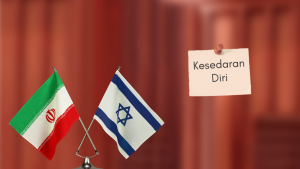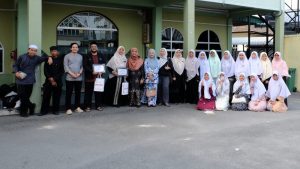But we have not been told on how the project can sustain itself financially and fulfil the needs of the rakyat equitably. I am having a hard time to grasp on how the most expensive transportation undertaking in the nation’s history can proceed even before the endorsement of a public transport masterplan.
The high cost of the rail network means that fewer areas can be served with public transport, and most of the cost can be disproportionately shouldered by the majority who will benefit the least from the proposed MRT alignments. Last year’s audit report on Prasarana showed that the current average LRT fare of RM1.60 has to be increased to nearly RM9 for the LRT infrastructural costs to be fully recouped within the next 20 years. Since Prasarana’s bonds are guaranteed by the government, every taxpayer will have to eventually foot the bill, no matter whether their homes are near or far away from the stations.
There have been talks on the MRT to replicate the success story of the subsidy-less Hong Kong Mass Transit Rail company, but it takes the closed traffic system city-state tens of years for the capital investments to be recouped through rail plus retail approach. Even then, the corridors can easily adapt to the catchment of the surrounding ultra high density population and the city-centric employment concentration. The pedestrian accessibility to our existing rail stations has yet to reflect the 400m radius of demand depicted in our structural plans due to unaddressed man-made barriers, and no one has yet to figure how the tremendous fortunes made by certain real estate beneficiaries situated next to our present rail stations can be tapped to recoup the rail infrastructure costs. Worse, there was recent news on high market value lands previously owned by KTMB, which should have been reaped towards enhancing KTM Komuter capacity, being sold off to fit the interests of certain real estate developers.
Greater KL consists of fragmented low and medium density housing sprawls, which are segregated by complicated networks of expressways. Employment centers are dispersed, and traffic gridlocks are building across the outer rings of Greater KL. Just like a highway will remain unreachable to its adjacent suburbs without access roads to the nearest exits, rapid transit lines will remain inaccessible without the support of local transit networks. The emphasis on making our car-oriented infrastructure more transit friendly, on speeding up the present feeder buses through better network designs and on making our streets more permeable and pedestrian-oriented should precede new mass transit announcements, not the other way around.
Communities must be empowered to decide on how their suburbs, towns and cities should be designed, and how the scarce roads available can be adapted to move more people instead of more cars. As walking is the single biggest mean to access transit, no amount of enforcement powers can beat the eyes and ears of the locals in safeguarding their bicycle lanes, sidewalks and open spaces from errant motorcyclists and car drivers if such amenities exist and the transit services are reliable. In world-class cities, it is the flexible use of different mobility tools, not the presence of state-of-the-art metros, that encourage people to use public transport. Pedestrians, cyclists and car drivers learn to co-exist with trams and buses through right-of-way transit classification and prioritization. The fundamental mindset that accords respect from car drivers to pedestrians, and from those who travel individually to those who travel collectively, can be shaped through multimodal solutions that interact with one another, not brand new stand-alone rail solutions one after another.
RM36bil is more than sufficient to build modern circulating tram lines for all major downtown areas in Malaysia, connected with Bus Rapid Transit (BRT) lines with exclusive busways on the arterial roads and local circulator lines with queue jumps at bottleneck junctions in the suburbs. RM36bil can even build more than 3,000km of BRT lines with MRT-like passenger capacity. With such, new jobs can be created all over Malaysia, and urban centers can be made more compact and sustainable. Public transport best practices around the globe show that local transit organizing authorities play the crucial role in bridging the gap between spatial and transit planning through constant participatory planning and empowerment. In Malaysia, even our local planners within the already scattered township jurisdictions all across the Klang Valley are in the dark on how the structural plans will jive in with the future transportation needs, especially considering the top- down secrecy of the MRT alignments.
Participatory approach is a fundamental tool for good governance, and it requires the trustees of public funds to afford the public their rights to evaluate and approve choices based on transparent studies and findings, in which the pros and cons are deliberated by experts and presented to all affected stakeholders. So far, there have been no studies made public on MRT’s cost-benefit comparison with other alternative transit modes such as BRT, trams and BET (which can work perfectly with traffic restraint and transit priority measures).
As a Muslim, I am taught by the Quran (42: 38) that the trustees of the people’s wellbeing must conduct their affairs by counsels. Our Muslim leaders always say the era where the government knows best is way over, and that people’s need should be put first. Time is ripe for them to practice what they preach.
Muhammad Zulkarnain Hamzah
Jawatankuasa Masyarakat Madani IKRAM







